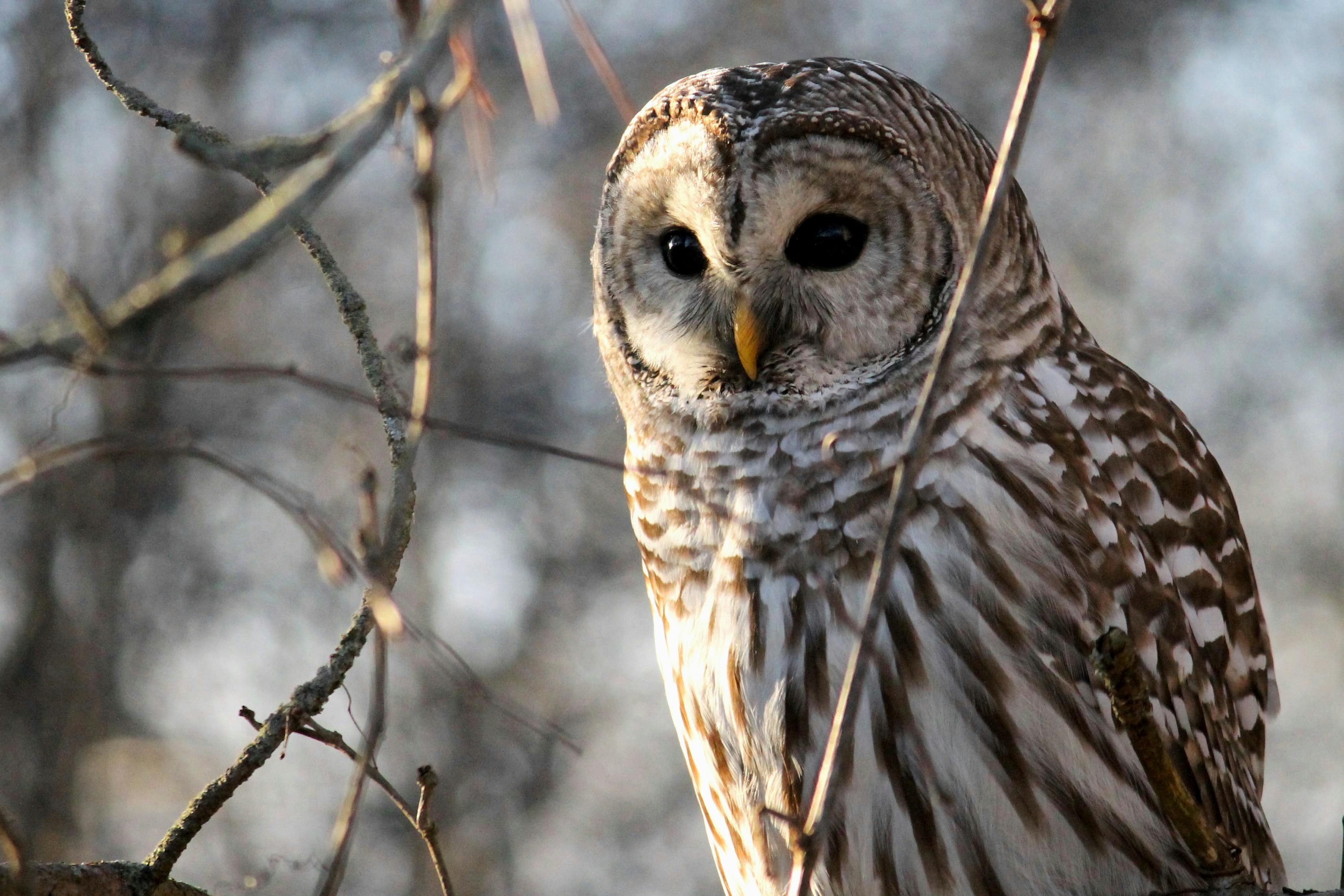The Barred Owl, also known as Strix varia, is a large, nocturnal bird of prey that is native to North America. It is a member of the Strigidae family, which includes over 200 species of owls that are found all over the world. The Barred Owl is a unique and fascinating creature that has captured the imagination of bird watchers and nature enthusiasts alike.
Barred Owl Classification and Evolution:
The Barred Owl is classified as a species of true owl, belonging to the family Strigidae. It is closely related to other North American owls such as the Great Horned Owl and the Eastern Screech Owl. The Barred Owl evolved in North America during the Pleistocene epoch, approximately 1.8 million years ago. Its distinctive barred pattern and large size make it easy to identify in the wild.
Barred Owl Anatomy and Appearance:
The Barred Owl is a large bird, measuring up to 24 inches long and weighing up to two pounds. It has a distinctive face with large, dark eyes and a hooked beak that is used for tearing apart prey. Its feathers are predominantly brown with a distinctive barred pattern of white and gray stripes. The Barred Owl has large wings that enable it to fly silently through the forest, making it an efficient predator.
Barred Owl Distribution and Habitat:
Barred Owls are found throughout North America, from southern Canada to Mexico. They prefer to live in dense, mature forests near streams or wetlands, where they can find ample prey. They are also found in urban areas, where they have adapted to living in parks and suburban neighborhoods.
Barred Owl Behavior and Lifestyle:
Barred Owls are primarily nocturnal and hunt at night. They have excellent eyesight and can hear prey moving on the forest floor from great distances. They are solitary birds, except during the breeding season when they mate and raise young. Barred Owls are also known for their distinctive call, which sounds like "who cooks for you, who cooks for you all."
Barred Owl Reproduction and Life Cycles:
Barred Owls breed once a year, usually in the early spring. They mate for life and will return to the same nesting site year after year. The female lays 2-4 eggs, which hatch after approximately one month. The young owls are dependent on their parents for food and protection for several months before leaving the nest.
Barred Owl Diet and Prey:
Barred Owls are opportunistic predators and will eat a wide variety of prey, including rodents, birds, reptiles, and amphibians. They are also known to hunt fish in streams and wetlands. Barred Owls are skilled hunters and have been known to catch prey as large as rabbits and squirrels.
In conclusion, the Barred Owl is a unique and fascinating bird of prey that is native to North America. Its distinctive appearance, behavior, and diet make it a popular subject for bird watchers and nature enthusiasts. Understanding the Barred Owl's classification, anatomy, distribution, behavior, reproduction, and diet can help us appreciate this magnificent creature and protect its habitat for future generations to enjoy.



Comments
Post a Comment